Welcome to the first edition of the TPSA Adviser Newsletter!
Download the TPSA Adviser PDF version here.
2016 Conference
Each year, TPSA features topics and presenters reporting achievements and advancements of pesticide-related issues. 2016 marked the 16th annual TPSA Conference, held in Albuquerque, New Mexico. This year’s focus included Reducing Spray Drift, State Pesticide Disposal Programs, Mini-Bulk Recycling, Gas Cylinder Management and Ag Plastics.
 Keynote Speaker – Jon Entine, Genetic Literacy Project
Keynote Speaker – Jon Entine, Genetic Literacy Project
![]() GMOs, Chemicals and Modern Agriculture: If you try to ban the future, it will just happen somewhere else.
GMOs, Chemicals and Modern Agriculture: If you try to ban the future, it will just happen somewhere else.
TPSA hosted Jon Entine, author of Let Them Eat Precaution, as keynote speaker. Entine is a Senior Fellow at the World Food Center Institute for Food and Agricultural Literacy at the University of California‐Davis connecting journalists to scientists on breaking controversies. Entine is also the founding director of the Genetic Literacy Project, a web‐based resource hub that examines genetics, ethics, media and public policy.
State Pesticide Disposal Map and Database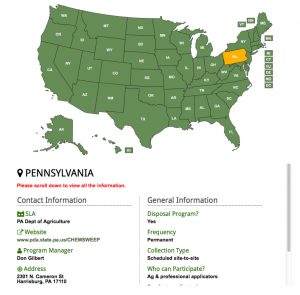
Marking a 10 year commitment to this pesticide issue, TPSA has published a State Pesticide Disposal Map & Database now available on the TPSA site. A convenient interactive map links viewers to the contact information for each state.
State Pesticide Disposal Map and Database
https://tpsalliance.org/resources/state-disposal-map
Reducing Spray Drift – A Crash Course
Click here to read more about reducing spray drift.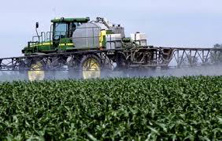
Drift reduction is an ever increasing priority in pesticide applications. Education on new technology and principles of drift reduction is a focus of TPSA and was a key topic at the 2016 TPSA Annual Conference. Below are highlights from conference presentations that provided information on some of the fundamental factors influencing drift potential and steps that can be taken to prevent off-target movement.
1. Forces acting on spray droplets: wind speed – gravity – evaporation – temperature inversions
Many forces can impact spray droplet movement, including:
- Wind speed – the stronger the wind current the more likely drift will occur.
- Gravity impacts the direction of falling droplets, goal is downward to crop.
- Evaporation causes droplets to shrink making them more susceptible to off-target movement. Smaller droplets are more likely to drift.
- Temperature inversions (still air with near zero wind speed) limits dispersion and allows small droplets to “hang” in a cloud, slowly moving across the landscape.
2. Droplet size
Droplet size is very important to ensuring the application reaches the target. Smaller droplets are more likely to be impacted by air drag, moving along with transient wind currents. The American Society of Agricultural and Biological Engineers (ASABE) have standards by which every nozzle is rated and droplet size is classified.
3. Nozzle Selection
Nozzle selection is an important part of the spray application. To avoid drift, applicators will need to replace conventional nozzles with nozzles engineered to reduce drift. This includes selecting nozzles capable of producing larger droplet sizes but still maintaining appropriate spray coverage. Selecting nozzles with spray droplet sizes that are medium (M) and larger, as classified and recommended by ASABE, will help prevent off-target movement. Specific recommendations depend on product and application conditions and can be guided by the pesticide label. Pressure, Spacing, Volume, and Speed are also factors in nozzle selection.
![]() TeeJetTechnologies – David Brackman – Drift Control 2016, A Spray Odyssey – Feb 2016
TeeJetTechnologies – David Brackman – Drift Control 2016, A Spray Odyssey – Feb 2016
4. Drift reduction and deposition aid adjuvants
Drift reduction agents can influence droplet size and stability and reduce off-target movement of pesticides. Thicker solutions tend to increase the number of large droplets while decreasing small droplet production in the spray spectrum.
The objectives of adjuvants used for drift reduction are to:
- increase active ingredient deposition on the target
- improve spreading, sticking, and penetration capabilities of the active ingredient
- thicken the spray solution and reduce the incidence of driftable fine spray particles
Applicators still need to follow all recommendations: avoid spraying in high winds, adjusting boom height, and using drift reducing nozzles. For best practices, keep in mind the use of a drift reduction adjuvant is a single step in the drift reduction process.
![]() WinField, Ray Pagati – Drift Mitigation Adjuvants and How They Work – Feb 2016
WinField, Ray Pagati – Drift Mitigation Adjuvants and How They Work – Feb 2016
5. Weed resistance triggers need for additional site of action herbicides
Increases in the development and distribution of glyphosate-resistant weeds have necessitated the need for additional herbicides with different sites of action. The new, pending herbicide-seed technologies that include synthetic auxin products pose both physical drift and vapor drift concerns.
Gas Cylinder Assessment & Management Training – Videos and Presentations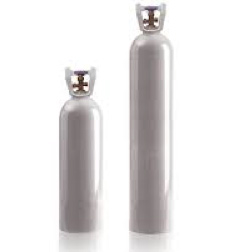
Three sessions dedicated to Gas Cylinder Assessment & Management Training were presented by Jeff Gold of Integrated Environmental Services, covering Gas Cylinder Anatomy, Assessment and Management Processes. The session presentations are included on the TPSA site in the Members dropdown menu under Member Area. Access is limited to TPSA Members.
![]() Video versions – The Gas Cylinder sessions are also being produced as a package of four videos. Two are complete at this time and are also posted on the TPSA site in the Members drop-down menu under the TPSA members-only Member Area.
Video versions – The Gas Cylinder sessions are also being produced as a package of four videos. Two are complete at this time and are also posted on the TPSA site in the Members drop-down menu under the TPSA members-only Member Area.
Worker Protection Standard (WPS) & International Center for Personal Protective Equipment (ICPPE)
WPS – Information on current and new revisions in the January 2016 updated EPA Worker Protection Standard was presented. Included in the sessions was a panel discussion on resources needed and steps necessary to educate individuals and businesses on the new requirements. Personal protective equipment for pesticide applicators, spray drift label language, and use issues were also covered.
![]() Jennifer Thomasen – Bayer Crop Science – Worker Protection Standard Training – An Industry Perspective
Jennifer Thomasen – Bayer Crop Science – Worker Protection Standard Training – An Industry Perspective
![]() Betsy Buffington, Iowa State University – Online Train the Trainer Course
Betsy Buffington, Iowa State University – Online Train the Trainer Course
ICPPE – Also covered was research and support plans of the International Center for PPE (ICPPE).
![]() Dr. Anugrah Shaw, University of Maryland, Eastern Shore, Department of Human Ecology
Dr. Anugrah Shaw, University of Maryland, Eastern Shore, Department of Human Ecology
Mini-Bulk Containers Cleaning, Recycling and Tracking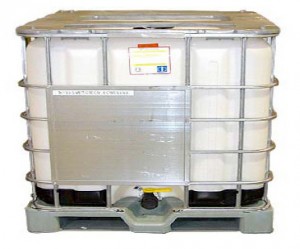
Encouraging the cleaning and recycling of Mini-Bulk and IBC containers has been a TPSA goal for many years, in particular caged tanks as they have the most value in post-use. Several presentations were made in pursuit of this TPSA goal. ![]() IFCA – Mini-Bulk Recycling Project – David Stengl
IFCA – Mini-Bulk Recycling Project – David Stengl
Precision Agriculture and Tracking Mini-Bulk Containers
An overview of the many applications in precision ag technologies and Big Data resources, including tank monitoring and tracking was shared. ![]() Big Data and The Ag Chem Supply Chain – Adam Meek, SkyBiz Tank Monitoring
Big Data and The Ag Chem Supply Chain – Adam Meek, SkyBiz Tank Monitoring
State Pesticide Disposal Programs
In addition to announcing the State Pesticide Disposal Map and Database now available on the TPSA site, experts from several states also highlighted their individual state efforts.
Benefits of Participating in TPSA – Member Perspectives
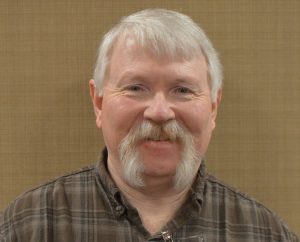 Paul Derig – J. R. Simplot – Environmental Health and Safety Manager
Paul Derig – J. R. Simplot – Environmental Health and Safety Manager
Why TPSA? It is the only forum that I have found where Academia, Government, and Industry can have on par discussions and input around best management practices, current and future regulations, as well as communications, across the spectrum of pesticide stewardship.
 Allan Hovis – Bayer CropScience – Director Stewardship/State Affairs – retired
Allan Hovis – Bayer CropScience – Director Stewardship/State Affairs – retired
TPSA was one of the highlights of my career over the last 15 years. I can easily say I got way more out of TPSA then I ever put in. I will miss it.
 Jeffrey Rogers, Virginia Department of Agriculture and Consumer Services
Jeffrey Rogers, Virginia Department of Agriculture and Consumer Services
Our membership in TPSA and attendance at the annual conferences has totally changed the way that we do business in Virginia. Between participation in the sessions and the business contacts made, our processes and contracts have improved and we have seen dramatic growth in our program areas.
Becoming a Member of TPSA
Members have the opportunity to get involved in the administrative and policy functions of the organization through our committees and projects. Each year, the membership cycle runs between September 1 and August 31. Members who register for TPSA conferences pay a reduced fee. There are four membership categories:
Individual $75 – Organization $200 (up to 3 individuals) – Retired $35 – Student $25
For more information, visit: https://tpsalliance.org/members/member-benefits/
To complete the membership application visit: https://tpsalliance.org/members/member-application/
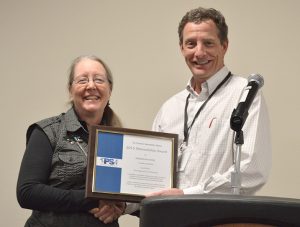
Carol Black receives the 2016 TPSA Program Innovation Award
Washington State University’s Carol Black Receives the WSU Sahlin Award and TPSA Program Innovation Award
Carol Black, Washington State University (WSU) Extension Specialist in entomology, has received the Sahlin Faculty Excellence Award for Outreach and Engagement.
As director of the WSU Urban Integrated Pest Management and Pesticide Safety Education Program, Carol provides training for the safe, environmentally sound, and effective use of commercial pesticides. She delivers science-based education to people who use pesticides in their profession and are regulated by the state.
Black works with extension agents, health officials, chemical suppliers, government regulators, pest managers and safety equipment vendors. She has consulted with the National Association of State Departments of Agriculture to enhance pesticide safety. Her work has contributed to policies and guidelines of the federal Environmental Protection Agency’s approaches to risk mitigation.
TPSA awarded Carol Black the Program Innovation Award for her support in developing a Personal Protective Equipment (PPE) Platform for the 2015 and 2016 TPSA Conferences.
Ag Container Recycling Council (ACRC) Reaches New Record
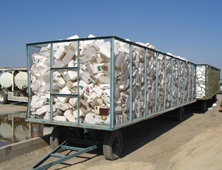 10,440,000 pounds of pesticide containers recycled in 2015
10,440,000 pounds of pesticide containers recycled in 2015
TPSA sponsor ACRC achieved a new record for recycling pesticide containers of 55 gallons or less. In 2015, 10,440,000 pounds of pesticide containers were collected and recycled in the USA under the auspices of the industry funded ACRC, representing a 4% increase over 2014. This record marks the sixth year in a row that pesticide container recycling exceeded eight million pounds. Since 1993, over 163 million pounds of pesticide containers have been collected and recycled.
2017 Conference – San Diego, California – February 7-9
TPSA’s 2017 Conference will be held in San Diego, CA at the Catamaran Resort, February 7-9, 2017.
Plans are underway for addressing current and future opportunities and topics related to Pesticide issues and technologies.
This Newsletter is sponsored by:
 |
 |
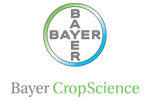 |
|
 |
 |
 |

